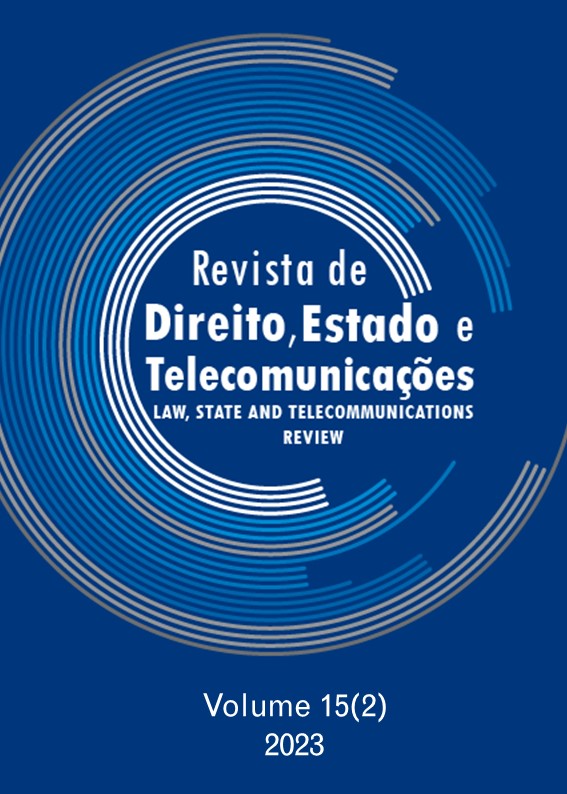Autonomous Robots and Their Legal Regime in the Context of Recodification of Civil Legislation of Ukraine
DOI:
https://doi.org/10.26512/lstr.v15i2.44893Keywords:
Object of Civil Legal Relations. Autonomous Robot. Legal Regime. Concept Of Robot. Liability For Damage Caused by Robot.Abstract
[Purpose] The issues of understanding what a robot is as an object of civil legal relations and the civil law regime that must be applied to ensure effective legal regulation of relations related to the use of robotics require legal solutions. Special attention should be paid to the study of liability for damage caused by robotics to a person or their property.
[Methodology/Approach/Design] The main methods on which this work was based are the method of systematization and the method of analysis. The article summed up various basic materials related to robots as objects of civil legal relations, as well as the impact of their existence on the current development of the world.
[Findings] Considering the purpose of robotics in the modern world, it is proposed to carry out legal regulation of robotics relations using an approach of the extension of civil law regulation applied to things. This does not exclude the introduction of special rules that will apply exclusively to robots as objects.
Downloads
References
ASARO, P.M. (2007). Robots and responsibility from a legal perspective. Available at: Available at: https://peterasaro.org/writing/ASARO%20Legal%20Perspective.pdf
ASIMOV, I. (2018). I, Robot. London: Harper Voyager.
BALKIN, J.B. (2015). The Path of Robotics Law. California Law Review, 6, 45-60.
CALO, R. (2016). Robots in American law. University of Washington School of Law Research Paper, 4, 1-45.
CAPEK, K. (2021). R.U.R. Kyiv: Komora.
Chernilovskiy, Z.M. (1991). Lectures on Roman private law. Moscow: Yuridicheskaya Literatura.
UKRAINE. Civil code of Ukraine. (2003). Available at: https://zakon.rada.gov.ua/laws/show/435-15#Text
GRAHAM, C. (2022). Robot performs first laparoscopic surgery without human help. Available at: https://hub.jhu.edu/2022/01/26/star-robot-performs-intestinal-surgery/
REPUBLIC OF KOREA. (2008). Intelligent robots development and distribution promotion act. Available at: https://cutt.ly/5LmKVi6
KHAN, P.H.; KANDA, T.; ISHIGURO, H.; GILL, B.T. & RUCKERT, J.H. (2012). Do people hold a humanoid robot morally accountable for the harm is causes? In: Proceedings of the Seventh Annual ACM.IEEE International Conference on Human-Robot Interaction (pp. 1-8). Boston: Attitudes and Responses to Social Robots. DOI 10.1145/2157689.2157696
KRISHER, T. & DAZIO, S. (2022). Felony charges are 1st in a fatal crash involving Autopilot. Available at: https://cutt.ly/qLmMI1h
LARSON, D. (2010). Artificial intelligence: robots, avatars, and the demise of the human mediator. The Ohio State Journal on Dispute Resolution, 25(1), 105-164.
UKRAINE. (2011). Law of Ukraine no. 3390-VI “On liability for damage caused by product defects”. Available at: https://zakon.rada.gov.ua/laws/show/3390-17#Text
NOVITSKII, I.B. (2008). Roman private law. Moscow: Jurisprudence.
EUROPEAN PARLIAMENT. (2017). Report with recommendations to the commission on civil law rules on robotics. Available at: https://www.europarl.europa.eu/doceo/document/A-8-2017-0005_EN.html
UKRAINE. (2003). Resolution of the cabinet of ministers of ukraine no. 1807 “On approval of the Procedure for state control of international transfers of military goods”. Available at: https://cutt.ly/bLmByvP
RICHARDS, N. & SMART, W. (2013). How should the law think about robots? SSRN Electronic Journal, 5, 1-25. DOI 10.2139/ssrn.2263363
Downloads
Published
How to Cite
Issue
Section
License
Copyright (c) 2023 Law, State and Telecommunications Review

This work is licensed under a Creative Commons Attribution 4.0 International License.
By submitting this paper to the Law, State and Telecommunications Review,
I hereby declare that I agree to the terms of the Creative Commons Attribution 4.0 International (CC BY 4.0).


